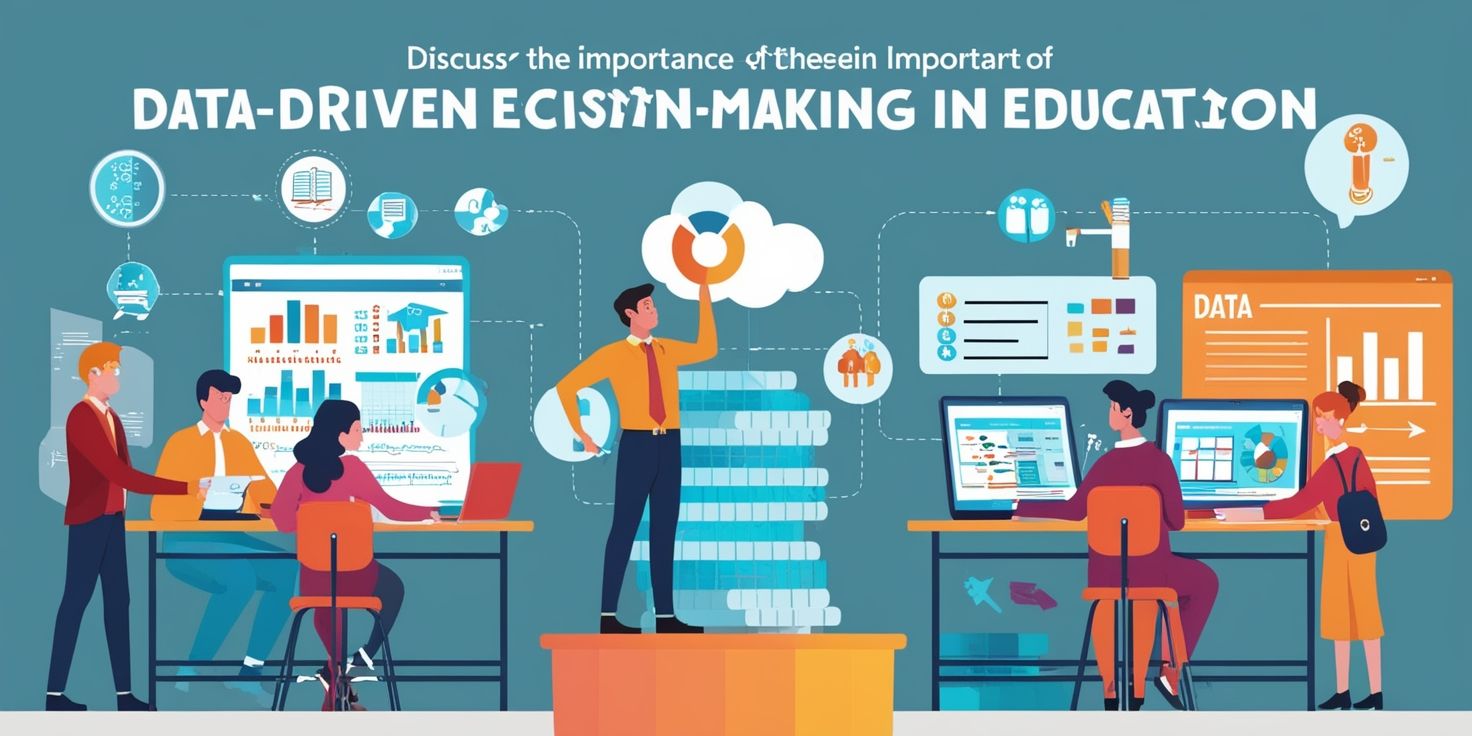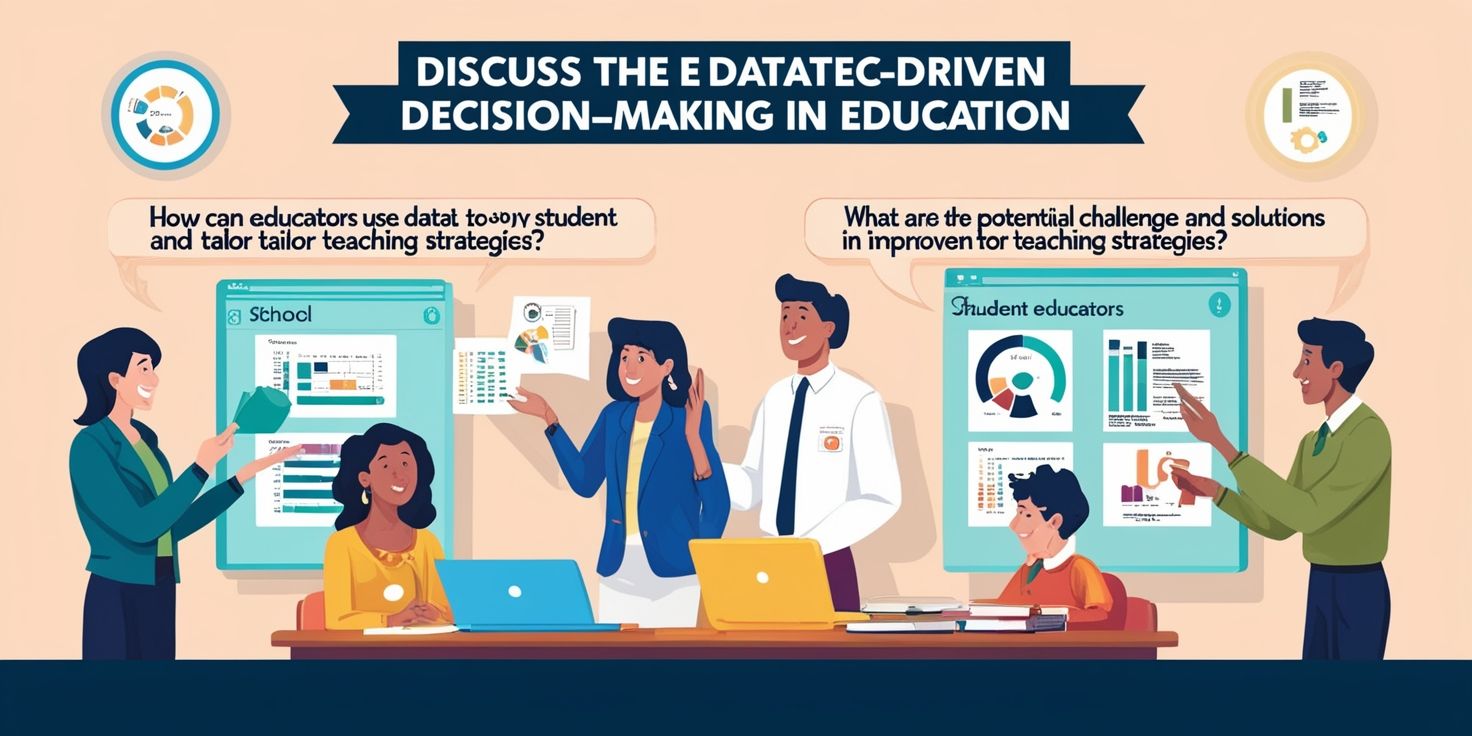Data-Driven Decision-Making in Education: Transforming Learning Through Insight
Data-Driven Decision-Making in Education or Data-driven decision-making (DDDM) has become a cornerstone of modern education, leveraging data to inform, guide, and enhance educational practices. By systematically collecting and analyzing data, educators can make more informed decisions that improve student outcomes, tailor instructional methods, and optimize resource allocation. This article explores the significance, benefits, challenges, and implementation strategies of data-driven decision-making in education.
The Significance of Data-Driven Decision-Making
In an increasingly data-centric world, education is no exception to the transformative power of data. Data-driven decision-making in education involves using data to guide decisions at all levels, from classroom instruction to school management and policy formulation. The significance of DDDM lies in its potential to create more effective and equitable educational environments.
- Personalized Learning: Data allows educators to tailor instruction to meet the individual needs of students. By understanding each student’s strengths, weaknesses, and learning styles, teachers can provide personalized support that enhances learning outcomes.
- Improved Student Outcomes: Through the analysis of academic performance data, educators can identify trends, predict challenges, and implement interventions that improve student achievement.
- Informed Policy and Management: School leaders and policymakers can use data to make strategic decisions about curriculum development, resource allocation, and program effectiveness, ensuring that policies and practices are evidence-based.
Benefits of Data-Driven Decision-Making
The benefits of DDDM in education are extensive, impacting students, teachers, administrators, and the broader educational ecosystem.
- Enhanced Instructional Practices: Teachers can use data to assess the effectiveness of their teaching methods and make necessary adjustments. This continuous feedback loop fosters a culture of reflective practice and professional growth.
- Targeted Interventions: Data helps identify students who are at risk of falling behind, enabling timely and targeted interventions. This proactive approach can significantly reduce dropout rates and close achievement gaps.
- Resource Optimization: By analyzing data on resource usage and student needs, schools can allocate resources more efficiently, ensuring that they are directed where they are most needed.
- Accountability and Transparency: Data provides a transparent basis for evaluating educational outcomes and holding schools accountable for student performance. This transparency can build trust among stakeholders, including parents, students, and the community.

Challenges in Implementing Data-Driven Decision-Making
Despite its benefits, implementing DDDM in education is not without challenges. These challenges can hinder the effective use of data and require strategic solutions.
- Data Quality and Consistency: The accuracy and consistency of data are critical for effective decision-making. Inconsistent data collection methods and poor data quality can lead to incorrect conclusions and misguided decisions.
- Data Privacy and Security: Protecting student data is paramount. Schools must ensure that data is securely stored and handled in compliance with privacy regulations, which can be a complex and resource-intensive task.
- Data Literacy: Educators and administrators need the skills to interpret and use data effectively. A lack of data literacy can prevent stakeholders from fully leveraging data insights.
- Resistance to Change: Implementing data-driven practices requires a cultural shift in many educational institutions. Resistance to change among staff can slow down the adoption of DDDM.
Strategies for Effective Data-Driven Decision-Making
To successfully implement DDDM in education, schools and districts can adopt several strategies that address these challenges and maximize the benefits of data.
- Establishing Clear Data Governance: Developing clear policies and procedures for data collection, storage, and use is essential. Data governance ensures that data is accurate, consistent, and secure, providing a solid foundation for decision-making.
- Building Data Literacy: Providing professional development and training in data literacy can empower educators and administrators to effectively interpret and use data. This training should focus on data analysis, data visualization, and ethical data use.
- Investing in Technology: Leveraging technology can streamline data collection and analysis. Schools should invest in robust data management systems that integrate with existing educational technologies and provide real-time data insights.
- Creating a Data-Driven Culture: Fostering a culture that values data-driven practices involves engaging all stakeholders in the process. This includes communicating the benefits of DDDM, providing ongoing support, and recognizing the successes achieved through data use.
- Collaborating with Stakeholders: Collaboration between educators, administrators, parents, and the community can enhance data-driven decision-making. Stakeholders can provide valuable insights and support the implementation of data-driven initiatives.
Case Studies and Examples
Several educational institutions and districts have successfully implemented data-driven decision-making, serving as models for others.
- Fresno Unified School District, California: Fresno Unified has developed a comprehensive data system that tracks student performance and provides real-time insights to educators. This system has enabled targeted interventions and improved student outcomes across the district.
- Baltimore County Public Schools, Maryland: Baltimore County has implemented a data warehouse that consolidates data from various sources, providing a holistic view of student performance. Teachers use this data to tailor instruction and support student learning.
- New York City Department of Education: NYC’s data-driven initiatives include the use of data dashboards. That provide educators with detailed information on student progress. These dashboards have helped identify at-risk students and implement timely interventions.
The Future of Data-Driven Decision-Making in Education
The future of DDDM in education is promising, with advancements in technology and data analytics poised to further transform educational practices. Emerging trends include:
- Artificial Intelligence and Machine Learning: AI and machine learning can provide deeper insights into student performance and learning patterns, enabling even more personalized and effective interventions.
- Predictive Analytics: Predictive analytics can forecast student outcomes and identify potential challenges before they arise, allowing for proactive measures.
- Data Integration: Integrating data from various sources, including academic performance, attendance. And socio-emotional indicators, can provide a comprehensive understanding of student needs and support holistic education.
Conclusion
Data-driven decision-making is a powerful tool for transforming education, offering numerous benefits such as personalized learning, improved student outcomes, and optimized resource allocation. While challenges such as data quality, privacy, and literacy exist, strategic approaches can address these issues and enable the effective use of data. By establishing clear data governance, building data literacy, investing in technology, fostering a data-driven culture. And collaborating with stakeholders, educational institutions can harness the full potential of data-driven decision-making. As technology and data analytics continue to evolve. The future of DDDM in education holds great promise for creating more effective, equitable, and personalized learning experiences.

90cuqm
93o3bv
911mfp
Great wordpress blog here.. It’s hard to find quality writing like yours these days. I really appreciate people like you! take care
This all-in-one clock radio CD player is more than just an alarm—it’s a full media hub. Along with a traditional CD player, it features AM/FM radio, Bluetooth connectivity, and a wireless remote control. Dual alarms make it easy to set different wake times, while the large LED display ensures easy readability. With rich stereo sound and multiple playback options, it’s one of the best clock radios with CD player and Bluetooth functionality. Great for music lovers who value versatility in a radio alarm clock CD player setup.
Magnificent web site. Lots of useful info here. I’m sending it to a few friends ans also sharing in delicious. And of course, thank you on your effort!
I believe that is one of the such a lot significant information for me. And i am satisfied studying your article. However want to commentary on few normal things, The site taste is perfect, the articles is in reality great : D. Good task, cheers
I think this site has got some really excellent information for everyone. “I have learned to use the word ‘impossible’ with the greatest caution.” by Wernher von Braun.
What’s Happening i’m new to this, I stumbled upon this I have found It absolutely helpful and it has aided me out loads. I hope to contribute & assist other users like its helped me. Great job.
I believe this internet site contains some really good information for everyone. “Anger makes dull men witty, but it keeps them poor.” by Francis Bacon.
Enjoyed reading through this, very good stuff, regards. “To be positive To be mistaken at the top of one’s voice.” by Ambrose Bierce.
It is best to participate in a contest for among the finest blogs on the web. I’ll recommend this website!
Great post. I was checking continuously this weblog and I’m inspired! Extremely useful information specially the final phase 🙂 I maintain such information much. I was looking for this particular information for a very long time. Thanks and good luck.
You made some first rate factors there. I appeared on the web for the problem and located most people will go along with with your website.
Very interesting points you have observed, regards for posting.